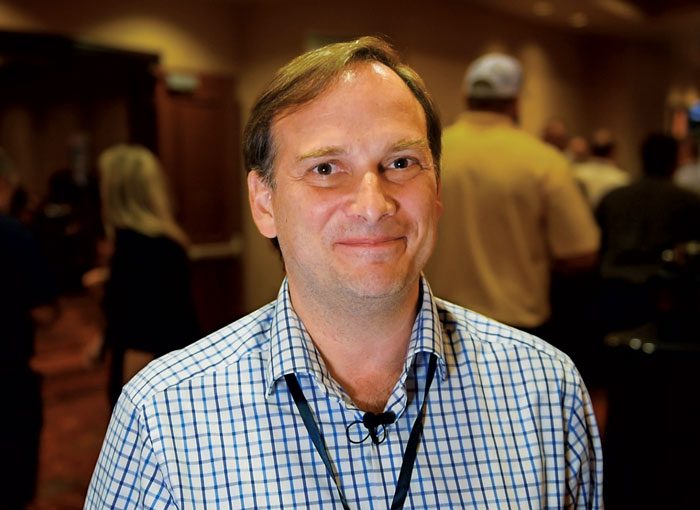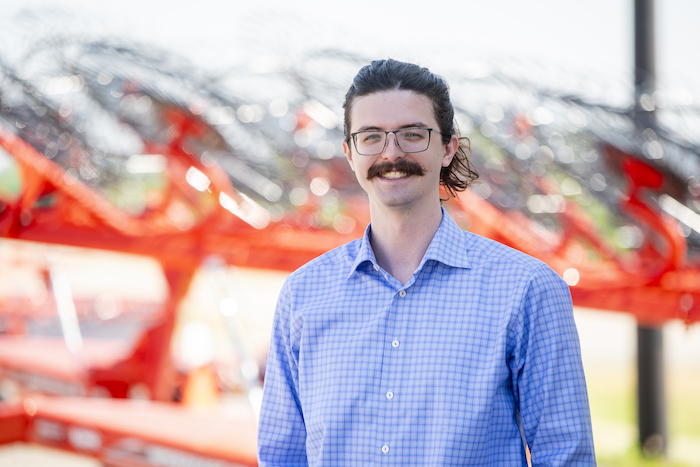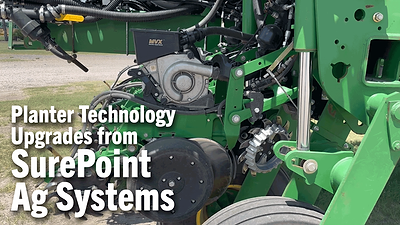On June 5, Claas FarmPoint, Claas’ new dealership concept, opened for business in Madisonville, Ky. In a Feb. 9 press release, Claas defined FarmPoint as “a physical and virtual launching point for parts, service and equipment” with “a select number of service bays but a high degree of focus on remote service.’’ On May 2, Claas announced expansion plans for a second location in Kokomo, Ind., and will reach 30 employees between its 2 stores by the end of 2023, mostly made up of technicians and a parts delivery team.
Claas FarmPoint Head of Commercial Development Patricio Frangella says Claas has tested the concept of a remote-service-focused dealership in Europe and South America and now sees the potential for success in the U.S.
Can you give a quick description of FarmPoint?
Frangella: FarmPoint is a system for how we approach customers. We put dedicated resident technicians in the concentration where the customers actually are so we can service those customers closer, within an hour’s distance of where they are. We supply those technicians and customers with parts using what we call “parts runners.” We’re turning the brick-and-mortar-type dealerships into service centers.
Takeaways
- FarmPoint aims to have technicians within a 1-hour drive of most customers
- The dealership uses a team of “parts runners” to keep techs from having to pick up their own repair parts.
- The remote service model was tested by Claas first in Europe and South America.
- Technicians use larger, more heavily equipped service trucks.
We are going to have 2 physical locations for Indiana and Kentucky, but you’re not going to see this big cathedral-type dealership. The FarmPoint stores are really service centers next to the interstates. We want our parts runners and resident technicians to not need to come back and pick up anything.
We are also implementing what we call a remote service support center, monitoring and helping with alerts from our customers’ machines. With certain alerts, we can call proactively within the harvest season and solve those problems over the phone. We don’t need to send a technician out unless it’s absolutely necessary.
We’re really narrowing down the root causes so when the technician actually goes to the customer, they have all the information we received in our Claas-owned CROP (Claas Retail Operations) DMS. We can also order parts and direct our parts runners to where the machines are to meet the technician and save time. We’re really trying to save as much time as possible to minimize downtime and have a proactive approach.
We’ve been doing the remote service support center in South America for the last 3 years, and it’s been done already in Europe. My job is coming to the U.S. to actually implement this system.
Can you walk through how the technicians will operate?
Frangella: The concept of the technician changes completely in FarmPoint. They’re almost entrepreneurs in how they do business. They have a schedule for their current and their upcoming week that they can follow. Technicians will start from home, do their remote service, and then go back home. We’re not only taking care of the actual customer in a different way, but we’re also taking care of our people in a different way. Even within the harvest season, they can do their job faster because they don’t have to go to the dealership as often.

FarmPoint invested in larger, more heavily equipped service trucks for their remote service model. Photo: FarmPoint
The traditional dealership ends up being very inefficient. You have to go pick up parts at the counter, talk to the parts employees, time goes by, and you actually end up often getting to the machine only in the last 1-2 hours of your day.
We also implemented in South America a customer survey. So after every service job, we have this survey to get feedback from customers, see how the technician did and how to improve what job they were doing.
Each technician also has a Claas hotline they can call for support. If anything comes up or they have any difficulty, with the digital service manager (DSM) they have all the information to help them. The DSM is part of how we handle scheduling, interfaces with all our Claas after-sales systems and integrates within our dealership management system.
On each job the remote technicians have, they have an app they use at the end showing what they did with the customer, everything they resolved, and they ask the customer to sign off on the repair on that phone. After that, they close the order and send it back to the admin team of the service department to invoice the customer. We email a copy of that report to the customer to be transparent in how we work it out.
Before starting their day, the technician can place parts orders directly in our system for a parts run and coordinate with the parts team so when they arrive at the job, the parts are there. Many of those customers are part of our on-farm parts program. We normally have a box for those parts on their farm, and we can deliver them there for the technician.
Then in the off season, we have all our winter inspection programs, and we actually schedule all this with what we call “inspection pilot,” which is our new online tool. With it, a customer can see the status of their machine and when the inspections were done. And if they want to sell that machine and want us to give them information on what we’ve done to that machine, they can ask for it in any Claas dealership.
“We’re turning the brick-and-mortar-type dealerships into service centers…”
That inspection pilot tool generates estimates on repair for the customer with what we call a traffic light. If the light is red, you really have to deal with that repair right now, and this is the cost. We can’t start the next harvest without doing this. When it’s yellow, it means that now that we are there already working on the machine, we have an opportunity to finish off this other repair, as well. And then when it’s green, that means it would be nice to get done and get you the best machine you can have for the next harvest.
With all this tech and these systems, the technician can go to the customer and go back home at the end of the day instead of waiting for that machine to arrive at the shop. And right now, it’s 50% more expensive to truck the machine out to a dealership than it was 2 years ago, which can really be an issue for the customers.
Something disruptive we’re also doing is not charging customers an hourly rate for our technician’s road time because techs really are within that hour distance of the customers. That’s what we mean when we say that instead of having 2 branches and a number of technicians, we actually have 10 branches with 8 technicians or more that we’re putting into the system.
What demographic of growers do you serve?
Frangella: The size of our customers varies, and there are quite a few between Northern Indiana, Southern Indiana and Western Kentucky. I would say in the South, we have larger farms and a larger concentration of those large farms. When you go up north, then you’ve got smaller farms. So we relate much more to professional farmers and mid-size to larger growers. Within 1,000 acres and above I would say would be our target customers.
What happens when a repair can’t be done remotely?
Frangella: We have our own shops in our 2 locations. But this would only be for really heavy repairs that we need to do. We don’t foresee doing much work like that, but of course it’s something that we will have.
FarmPoint’s Roots in Argentina
Click here for additional content from this interview detailing the remote service model’s beginnings in South America.
We are really looking forward to implementing our system now we are in full swing. This is a learning opportunity for us, and we are getting a lot of feedback from customers. We’ve been talking to a large number of customers already,w and they all bring ideas, new things that could improve the way we operate and could improve our business system.
Does the remote service model require upgraded service trucks?
Frangella: Our trucks are 21,000 pound International MV607s and have bigger cranes than you normally would. They have all the special tools from Claas — sometimes those special tools are only in the dealerships, and you have to pick them up and send them back.
Where do you see the future of FarmPoint going?
Frangella: For the future of FarmPoint, we are developing in a way that has to be more comprehensive. And we’ll be integrating more lines of products within the Claas world. We need to showcase not only that the actual model of the system works and works for the customer loyalty and satisfaction, but we also need to grow in volume, generating repeat sales and service, bringing additional business and of course generating a proper profit.
But for the time being, the goal is to ensure that our model really works and achieves customer satisfaction and customer understanding that they could be part of something really tailored to their needs.







